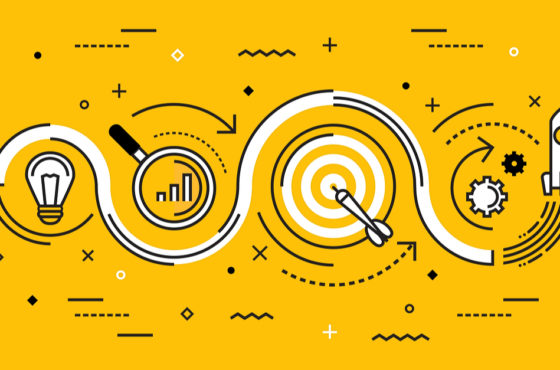An Energizing B2B Buyer Persona Recipe
The single most important part of a vendor’s website, according to B2B buyers responding to a recent survey by DemandGen Reports, is content that speaks directly to who the buyer is and what he or she needs (69% said this is very important). A vast majority of buyers (84%) said they favor vendors that address their specific pain points. To achieve the high degree of relevance needed to meet the increasingly greater demands of buyers, many B2B marketers are successfully utilizing buyer personas.
A buyer persona is a detailed profile of a distinct segment of your target audience that is involved in buying your solution. To be most effective, this profile should consist only of information directly relevant to attracting, engaging, and motivating your buyer.
Ingredients
Cooking up buyer personas with the right information from the right sources will ensure that you have the accuracy and deep understanding needed to make a meaningful connection with your buyers. A complete, insightful, and actionable buyer persona will have the following seven components:
1. Demographics and Firmographics
This is typically the identifier of the persona and includes categories such as title, department, company size, industry, time in business, and so on.
2. Buying Role
The level of involvement your buyer has in the buying process. This often includes the decision maker, influencer, economic buyer, and the champion or mobilizer. Keep in mind that some buyers take on multiple roles.
3. Buying Triggers
The circumstances, problems or needs that trigger the decision to seek a new solution. Examples include business growth, an insufficient current solution, and economic factors.
4. Responsibilities, Goals, and Desired Outcomes
Your buyer’s tasks, responsibilities, priorities, and goals relevant to your solution. Also, your buyer’s definition of success, KPIs, and valued outcomes achievable through your solution (e.g., minimizing risk, maximizing efficiency, and improving customer satisfaction).
5. Barriers and Objections
The concerns, objections and obstacles that are most likely to prevent your buyer from moving forward in the buyer’s journey. Examples include cost of ownership, integration with existing systems, and training time.
6. Information Sources and Preferences
The people and places that are the trusted sources of information for your buyer at each stage in the journey (e.g., colleagues, industry organizations, and vendor websites). Also, the content types most preferred (e.g., whitepapers, videos, and case studies).
7. Buying Criteria
The specific features and benefits of your solution that are critical in your buyer’s evaluation and decision.
Directions
As with any recipe, where you get your ingredients can make all the difference. To gather the information for your personas, you will first want to speak to your sales team, as they are engaging directly with your buyers every day and are thus a wealth of knowledge. Important buyer questions, concerns, and information needs are often readily apparent to salespeople due to the nature of their relationships. Involving your sales team in the process has the added bonus of ensuring they buy in and will make use of the personas.
But the only way to be sure you are getting the highest quality information while minimizing bias and guesswork is to go directly to the source: your buyers. Careful questioning of your buyers will help you uncover the valuable insights that you need to understand their motivations, attitudes, perceptions, and behaviors. Once completed, you are then ready to shape and form your data into easy-to-digest personas that allow you and your team to get the most out of each ingredient.
FAQs at this point are ‘How many personas should I make?’ and ‘How many buyers do I need to interview?’. To answer these, keep in mind that an essential aspect of a persona is that it should consist of buyer characteristics meaningfully different than those found in your other personas. Otherwise, it is of little use to make the distinction between buyer types. So only create separate personas when this is the case. At some point, too many personas can be unwieldy, so a good rule of thumb is no more than 6 or 7. To be able to reliably say that the differences you are observing between personas are real, your research should be more quantitative than qualitative (so 30 or more interviews per persona rather than just a handful).
How to Serve
Your buyer personas can be put to use in a variety of ways:
- Demand Generation – Define the targets for your campaigns and create calls-to-action that move your buyers to the appropriate next steps.
- Messaging – Communicate to your buyers in a way that attracts their attention, resonates with them, speaks their language, and allows them to connect the dots between your solution and their objectives.
- Content – Deliver your messages in formats and vehicles that your buyers prefer and that are right for their needs at each stage of the buyer’s journey.
- Digital – Provide a website experience that maximizes the likelihood your buyers will easily and quickly accomplish their goals.
- Sales – Supply your sellers with the strength they need to engage with buyers and drive conversions.
Following the steps above will result in B2B buyer personas that greatly nourish your marketing and sales effectiveness. Bon Appétit!
To learn more about how Inquisitive will help you gain the buyer insights you need, visit our page here Buyer’s Journey Research, or contact us.



Love how you describe B2B persona.